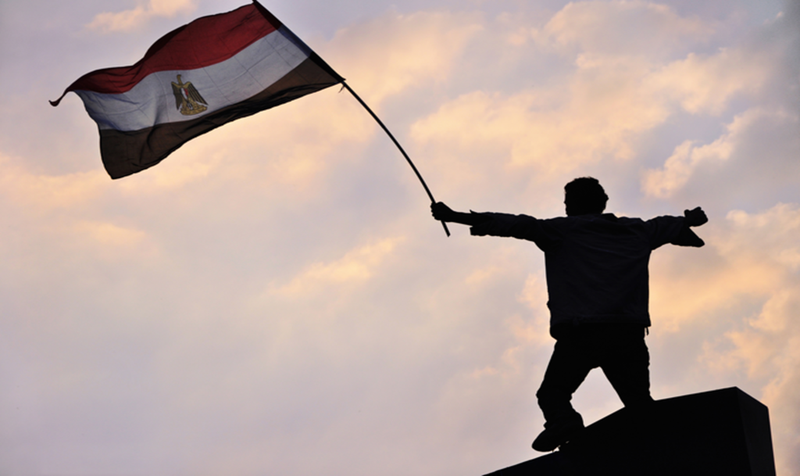Secret financing in Egyptian presidential elections

Next week, Egyptians are almost certain to elect as their new president Abdel Fattah el-Sisi, the military chief who was in charge when a coup ousted Egypt’s first democratically elected president, Mohamed Morsi. Sisi — who is expected to win in a landslide — recently warned journalists not to cover corruption, instead urging them to “give officials a chance for, say, four months. If you have information or a subject you need to whisper in the ear [of officials], it is possible to do that without exposing it.”
Sisi’s admonition is a dire omen for reformers focused on government transparency. Whispering in an official’s ear is about as far away from sunlight as it gets. This situation highlights the importance of accountability and public knowledge of democratic processes, if even through their absence. As recently noted in a Los Angeles times op-ed, “almost every popular revolt aimed at toppling a government in recent years, from the Arab uprisings to Ukraine’s revolution, began as a protest against acute corruption.” An opaque political financing regime is an invitation to a corrupt government.
And there can be no doubt that Egypt faces “acute corruption.” The country scored a 32 on Transparency International’s 2013 Corruption Perception index, where a 0 means a country is viewed as highly corrupt and 100 means it is perceived as clean. So concerned is TI Egypt about corruption that it called for Egypt’s presidential candidates to pledge to tackle corruption within six month of assuming office.
So far neither candidate has taken the pledge.
Unfortunately, Egypt’s current political finance regime is cloaked in darkness. What we do know about the candidates’ campaign finances comes from the candidates themselves. For instance, the Sisi campaign reported spending LE12 million (about $1.7 million USD) on advertising, as compared to LE100,000 reported by Hamdeen Sabahi, Sisi’s almost symbolic opposition. But where does that LE12 million come from? And what does it pay for? Does it add up? Reports indicate that Sisi’s image is plastered all over the country, from state-run television to billboards, trailing airplanes and jet skis and even on chocolate bars. Does the Sisi saturation machine cost more than the LE 20 million spending cap required by law? Egyptian news has reported that non-public documents filed with the Presidential Elections Committee (PEC) show that Sisi has spent at least LE 30 million raising questions as to whether spending caps are enforced, or what remedy exists if a candidate exceeds the limits.
Moreover, while the law prohibits contributions from an “institution” that has a “legal personality,” such as a corporation, trade union or branch of the government, many reports suggest that the military’s Department of Morale Affairs financed much of Sisi’s campaign activities, including pro-Sisi films and posters. Sabahi’s campaign, it can be assumed, received no comparable government benefit, but, of course, there is no way to be certain of any of this as previous parliaments have been prohibited from even discussing details of the military’s budget. Additional secret spending was hinted at in the run up to the nomination, when the Sabahi campaign filed an official complaint that state owned vehicles were used to drive citizens to offices where they would sign the petitions that were a prerequisite to Sisi’s nomination. Moreover, it is unclear who has paid for various pro-Sisi rallies around the country — the campaign, the military or private citizens — rallies the candidate himself has not attended due to security risks.
In a country where journalists and protesters are jailed or killed, and basic freedoms of speech and assembly are threatened daily, political finance transparency may seem like a low priority. But because opaque election funding is directly linked to corruption, Egyptian reformers face a difficult yet important challenge designing an inclusive and representative process.
With a presidential candidate sailing into office on a ship of undisclosed money while urging journalists to keep their corruption stories under wraps and refusing to commit to tackling his countries endemic corruption, it is an understatement to say that Egypt faces an uphill battle to make transparency of money in politics a priority, much less a reality. Globally, reformers in the world of political finance transparency often seek “low-hanging fruit” — relatively easy victories to help increase momentum for a larger change. We cheer “baby steps” when politicians or laws are moving in the right direction. In Egypt, those baby steps will be even smaller, more tentative and take longer to achieve.
But an estimated 60% of Egypt’s population is under 30 and have come of age in an Internet world, where access to information from around the world is literally in their hands. And if social media did not plant the seeds for the Arab Spring, it at least helped it blossom. Egyptians’ expectations for transparent political finance information will naturally follow their increasing connectivity with each other, and the rest of the world.

